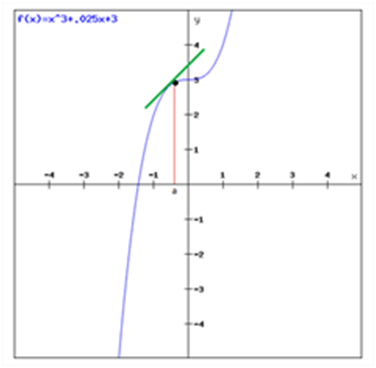- Books Name
- Mathmatics Book Based on NCERT
- Publication
- KRISHNA PUBLICATIONS
- Course
- CBSE Class 12
- Subject
- Mathmatics
Second Order Derivative:
The first-order derivative at a given point gives us the information about the slope of the tangent at that point or the instantaneous rate of change of a function at that point. Second-Order Derivative gives us the idea of the shape of the graph of a given function. The second derivative of a function f(x) is usually denoted as f”(x). It is also denoted by D2y or y2 or y” if y = f(x).
Let y = f(x)
Then, dy/dx = f'(x)
If f'(x) is differentiable, we may differentiate (1) again w.r.t x. Then, the left-hand side becomes d/dx(dy/dx) which is called the second order derivative of y w.r.t x.

Example: Find d2y/dx2, if y = x3?
Solution:
Given that, y = x3
Then, first derivative will be
dy/dx = d/dx (x3) = 3x2
Again, we will differentiate further to find its
second derivative,
Therefore, d2y/dx2 = d/dx (dy/dx)
= d/dx (3x2)
= 6x
Example : Find d2y/dx2, if y = Asinx + Bcosx, Where A and B are constants?
Solution:
Given that, y = Asinx + Bcosx
Then, first derivative will be
dy/dx = d/dx (Asinx + Bcosx)
= A d/dx (sinx) + B d/dx (cosx)
= A(cosx) + B(-sinx)
= Acosx – Bsinx
Again, we will differentiate further to find its second derivative,
d2y/dx2 = d/dx (dy/dx)
= d/dx (Acosx – Bsinx)
= A d/dx (cosx) – B d/dx (sinx)
= A(-sinx) – B(cosx)
= -Asinx – Bcosx
= -(Asinx + Bcosx)
= -y
Example: If x = t + cost, y = sint, find the second derivative.
Solution:
Given that, x = t + cost and y = sint
First Derivative,
dy/dx = (dy/dt) / (dx/dt)
= (d/dt (sint)) / (d/dt (t + cost))
= (cost) / (1 – sint) ……. (1)
Second Derivative,
d2y / dx2 = d/dx (dy/dx)
= d/dx (cost / 1 – sint) …….. (from eq.(1))
= d/dt (cost / 1 – sint) / (dx/dt) ………(chain rule)
= ((1 – sint) (-sint) – cost(-cost)) / (1 – sint)2 / (dx/dt) …. (quotient rule)
= (-sint + sin2t + cos2t) / (1 – sint)2 / (1 – sint)
= (-sint + 1) / (1 – sint)3
= 1 / (1 – sint)2

 KRISHNA PUBLICATIONS
KRISHNA PUBLICATIONS
